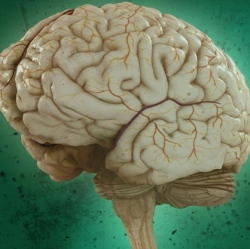
Researchers have generated a blueprint for how to build a human brain at unprecedented anatomical resolution. This first major report using data from the the BrainSpan Atlas of the Developing Human Brain is published in the journal Nature this week. The data provide insight into diseases like autism and to the origins of human uniqueness.
“Knowing where a gene is expressed in the brain can provide powerful clues about what its role is,” says Ed Lein, Investigator at the Allen Institute for Brain Science. “This atlas gives a comprehensive view of which genes are on and off in which specific nuclei and cell types while the brain is developing during pregnancy.
This means that we have a blueprint for human development: an understanding of the crucial pieces necessary for the brain to form in a normal, healthy way, and a powerful way to investigate what goes wrong in disease.”
This paper represents the first major report to make use of data collected for the BrainSpan Atlas of the Developing Human Brain, a science consortium initiative that seeks to create a map of the transcriptome across the entire course of human development.
“This atlas is already transforming the way scientists approach human brain development and neurodevelopmental disorders like autism and schizophrenia,” said Thomas R. Insel, Director of the National Institute of Mental Health.”
The researchers pointed to autism as a disorder with particularly pertinent links to early brain development. The research team used the BrainSpan Atlas to examine a number of genes linked to autism in prior scientific studies during development.
“We used the maps we created to find a hub of genetic action that could be linked to autism, and we found one,” says Lein. “These genes were associated with the newly generated excitatory neurons in the cortex, the area of the brain that is responsible for many of the cognitive features affected in autism such as social behavior.
This discovery is an exciting example of the ability of the BrainSpan Atlas to generate meaningful hypotheses about the origins of brain developmental disorders.”
